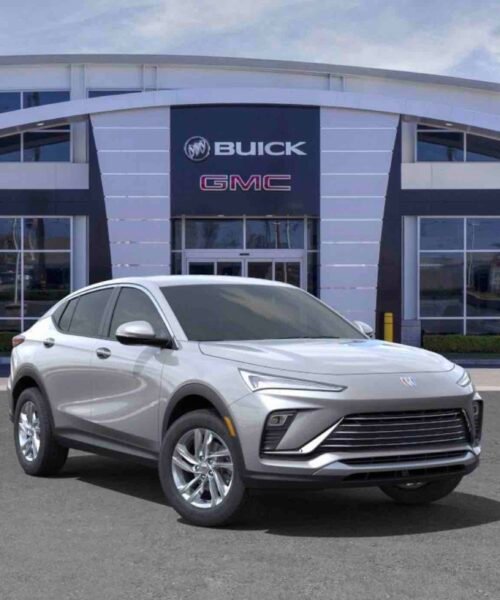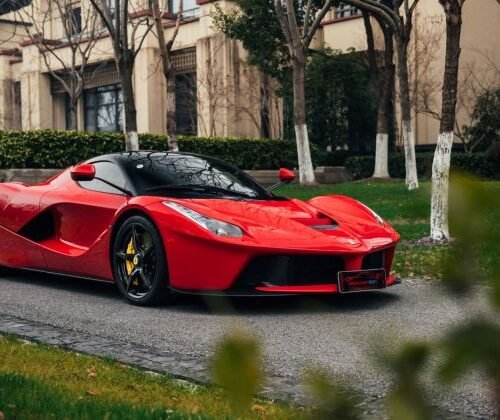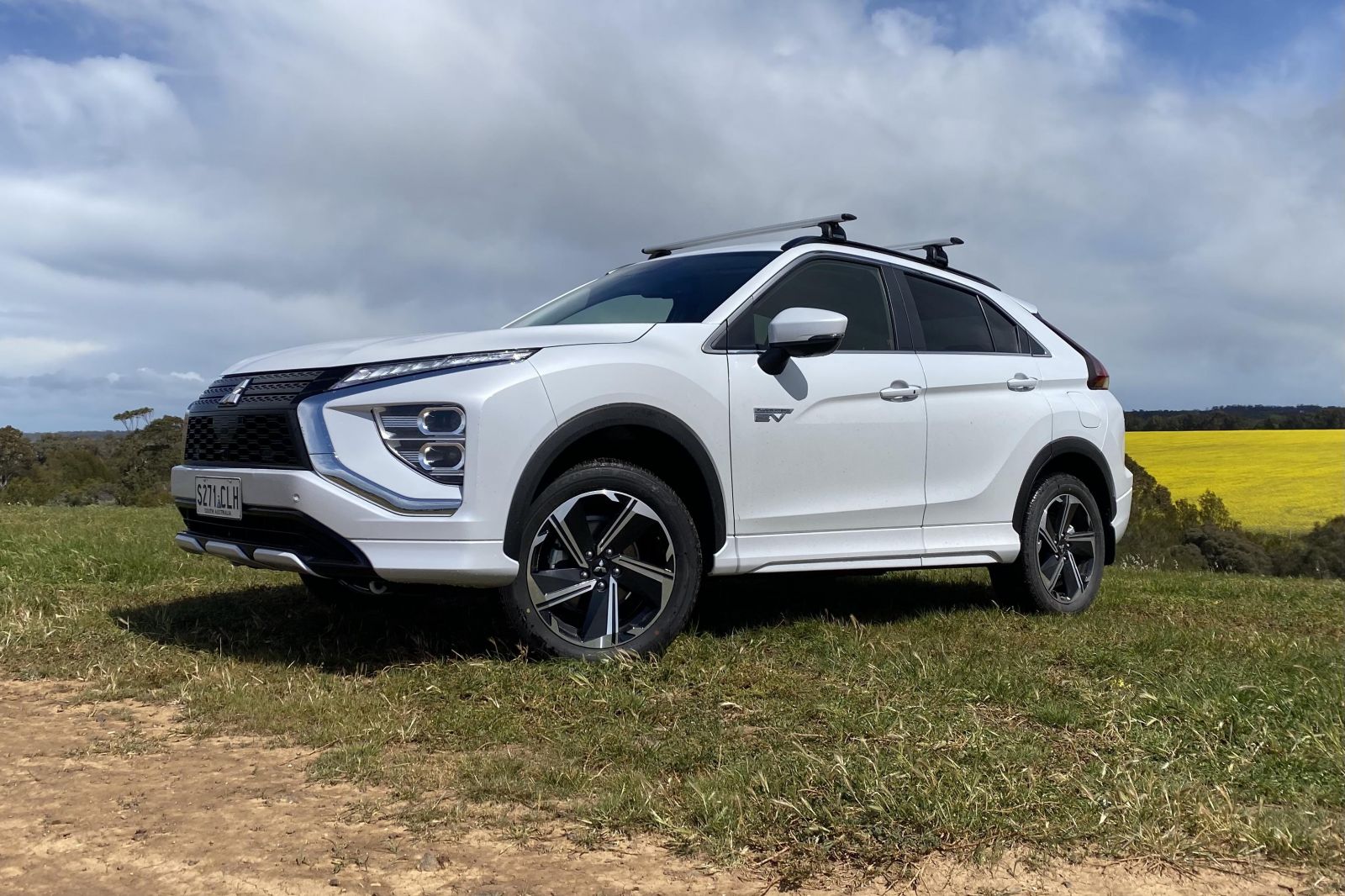

From Justluxe Content Partner CarExpert
Mitsubishi became the first mainstream car brand in Australia selling a plug-in hybrid SUV when it launched the Outlander PHEV in 2014. Now the company is expanding its range with plug-in derivatives of the smaller, edgier Eclipse Cross, ostensibly targeting a younger buyer than its bigger sibling.
The pitch for the Eclipse Cross Plug-In Hybrid – Mitsubishi doesn’t use the ‘PHEV’ moniker anymore because it’s non-descriptive – is that it promises daily electric commuting and petrol-fuelled road tripping.
Throw in trick two-motor all-wheel drive (AWD) and an interesting design, and you have what looks like an intriguing gateway to electrified motoring. But does it deliver? And what of its competitors? This is our launch review, focused on the middle-of-the-range Aspire grade.
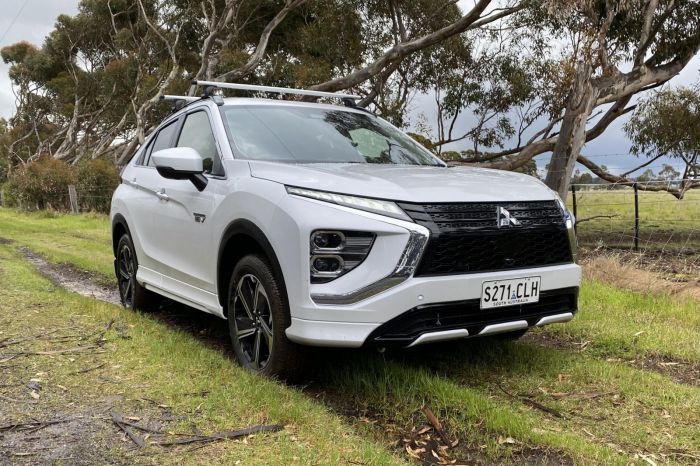
How much does the Mitsubishi Eclipse Cross Plug-In Hybrid cost?
The entry-level Eclipse Cross Plug-In Hybrid ES is listed at $46,490 before on-road costs, the Aspire $49,990, and the Exceed $53,990.
A petrol-only Exceed with AWD wears a before on-road price of $40,790, so the rough price of the PHEV system is $13,200 over the closest equivalent.
Neither the petrol-only Eclipse Cross ES nor Aspire come with AWD, hence why we used the Exceed for comparative purposes.
On a side note, at launch, the brand is selling the PHEV ES for $49,990 drive-away nationally without advertising any deals on the Aspire and Exceed.
* listed prices are for cars sold in Australia
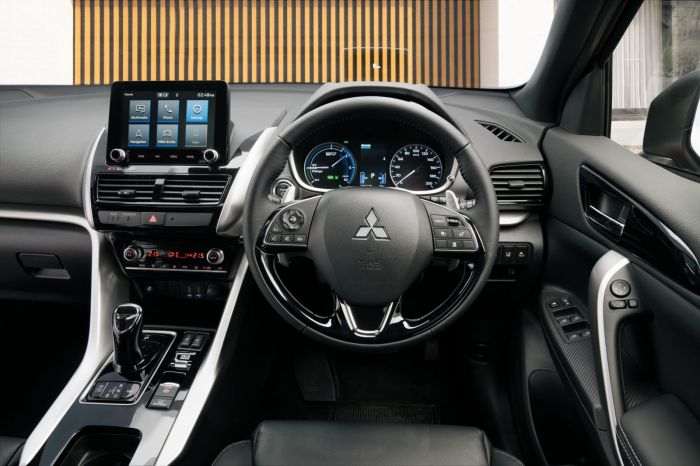
In the context that’s reasonable. A smaller Kia Niro Plug-in Hybrid also costs $49,990 in base form, and the MG HS Plug-In Hybrid $47,990 – both drive-away. The latter is bigger and more powerful, but Mitsubishi as a brand has more runs on the board.
The Eclipse Cross Aspire is also priced alongside mainstream EVs like a Nissan Leaf, without the range anxiety of course. However, there’s no denying that PHEV technology is still held back by cost. You can also pick up a larger Mitsubishi Outlander PHEV in runout for $51,990 using an identical drivetrain to the Eclipse Cross tested here.
The downside of that is the Outlander is due to be replaced in early 2022 by a more luxurious, longer-range (and more expensive) new-generation PHEV.
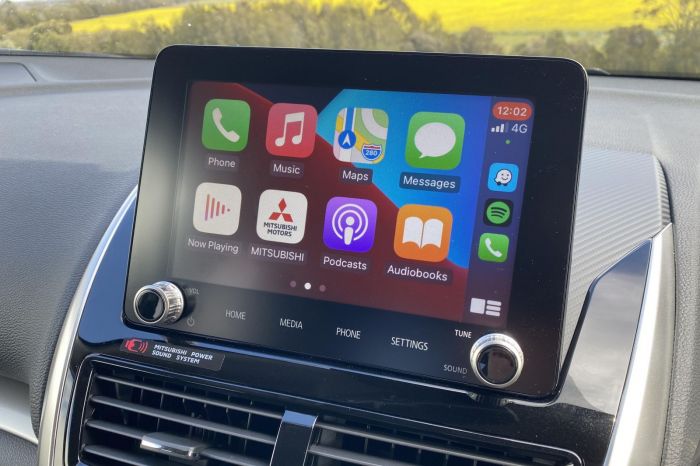
A technologically different competitor that Mitsubishi considers key is the Toyota RAV4 Cruiser AWD Hybrid at around $51,000 drive-away (keep in mind there are stock shortages).
While a larger vehicle, a RAV4 Hybrid cannot be recharged from a PowerPoint and therefore lacks the capacity to drive fully electric (zero-emission) for daily errands. It’s a simpler piece of kit, in other words.
2022 Mitsubishi Eclipse Cross Plug-In Hybrid pricing:
Eclipse Cross PHEV ES: $46,490 ($49,990 drive-away)
Eclipse Cross PHEV Aspire: $49,990
Eclipse Cross PHEV Exceed: $53,990
Prices exclude on-road costs unless specified. * listed prices are for cars sold in Australia
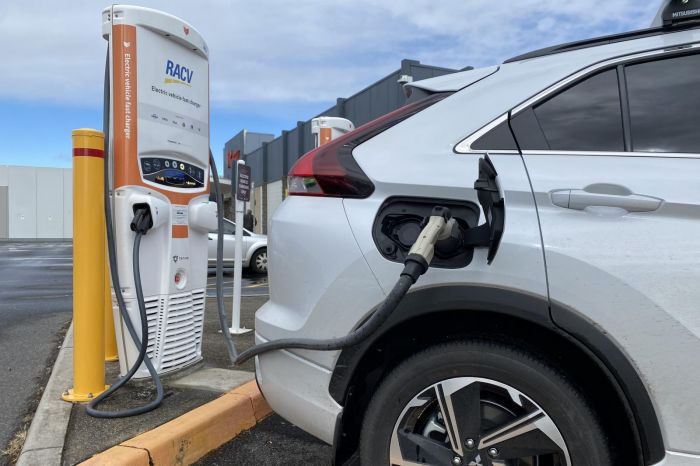
What do you get?
The ES comes with halogen projector headlights (eurgh), 18-inch wheels, paddle shifters, LED daytime running lights, a rear spoiler, cruise control, cloth seats, an 8.0-inch touchscreen with Apple CarPlay/Android Auto, Bluetooth, two USB ports, digital radio, climate control, and a reversing camera.
All grades also work with a smartphone app that allows you to remotely check the car’s status, location, charge schedule, or pre-engage the A/C and headlights. The Aspire adds privacy glass, roof rails, micro-suede, and synthetic leather seat trim, an auto-dimming rear-view mirror, dusk-sensing LED headlights, heated front seats, a powered driver’s seat, an upgraded audio system, a 360-degree camera system, front and rear parking sensors, auto wipers, and adaptive cruise control.
The flagship Exceed finishes off with extras such as a glass head-up display, TomTom satellite navigation, a panoramic glass sunroof, leather seats, front passenger seat power adjustment, a heated steering wheel, and black headlining.
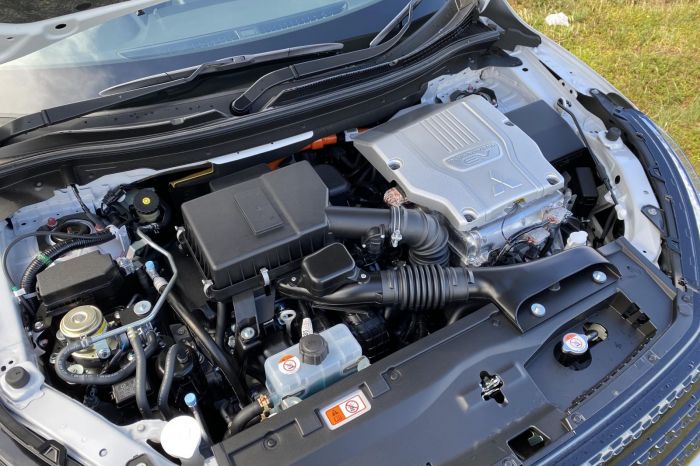
Is the Mitsubishi Eclipse Cross Plug-In Hybrid safe?
All Eclipse Cross grades including the PHEV hold a five-star ANCAP crash rating based on 2019 testing – 97 percent for adult protection, 78 percent for children, 80 percent for pedestrians, and only 58 percent for safety assist features.
All grades come with seven airbags (driver and passenger front and side, two-row curtains, driver’s knee), two rear ISOFIX anchors, and three top-tether points.
Active safety tech as standard includes forward autonomous emergency braking with pedestrian detection and lane-departure warning.
The Aspire and Exceed add blind-spot monitoring and rear cross-traffic alert. The Exceed alone adds a system that stops the vehicle if the driver inadvertently presses the accelerator near an obstacle, called ultrasonic mis-acceleration mitigation.
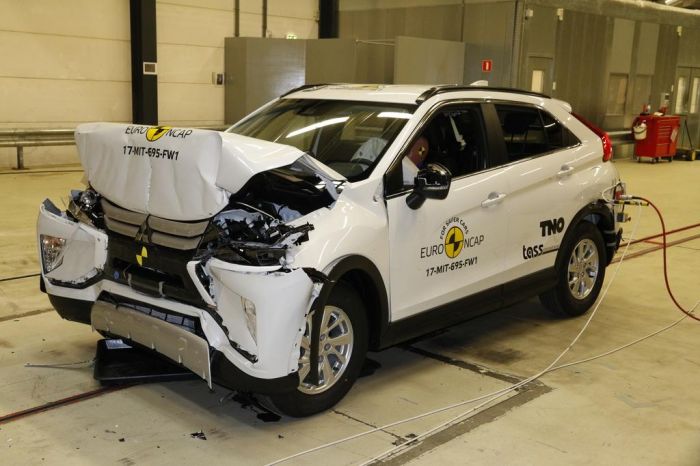
What is the Mitsubishi Eclipse Cross Plug-In Hybrid like on the inside?
The interior isn’t all that different from the petrol-only Eclipse Cross. The Exceed with its dual-pane glass roof and the head-up display have some glitz and glam, but the Aspire’s interior is more subdued.
There are a lot of piano black and silver plastic trims to add some variety, but it feels very much like a regular mainstream SUV in terms of materials. The extra money covers the drivetrain, not the cabin.
The steering wheel’s buttons for cruise control and audio functions are simple to figure out, and the fixed metallic paddles are really lovely. The instruments are analog with a small centered trip computer – and unfortunately, there’s no digital speedo unless you go for the Exceed.
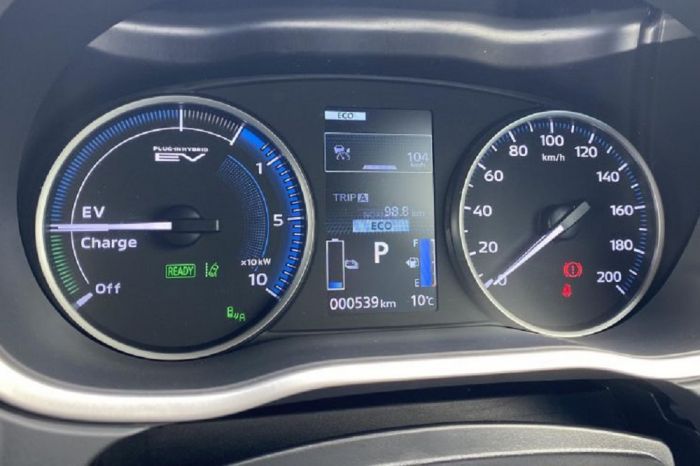
Along the tunnel is a distinctive PHEV ‘gear’ shifter flanked by mode buttons and a rocker switch to mess with the motor/ESP modes.
The 8.0-inch touchscreen uses basic tiles on the home screen and managed phone mirroring without any glitches, and houses a 360 parking camera. The lack of a wireless charge pad, USB-C ports, and sat-nav is notable though.
The screen has some PHEV-specific menus such as energy/power flow screens, real-time power delivery, and electricity consumption. Some struck me as useful (what percentage of a given hybrid drive was EV only, for example) whereas others seemed nigh-on useless for everyday driving.
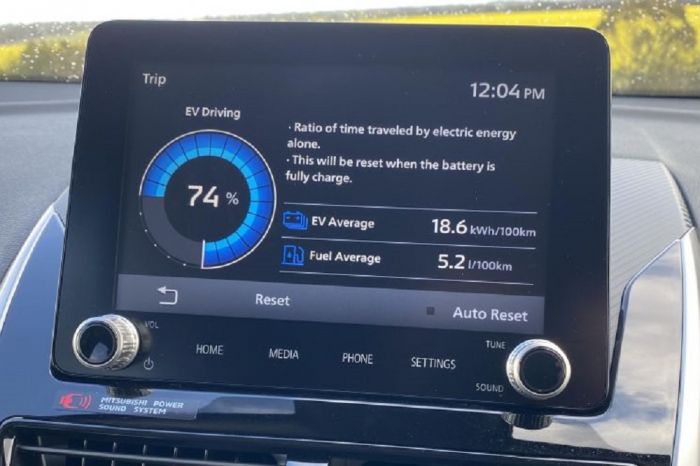
Along the tunnel is a distinctive PHEV ‘gear’ shifter flanked by mode buttons and a rocker switch to mess with the motor/ESP modes.
The 8.0-inch touchscreen uses basic tiles on the home screen and managed phone mirroring without any glitches, and houses a 360 parking camera. The lack of a wireless charge pad, USB-C ports, and sat-nav is notable though.
The screen has some PHEV-specific menus such as energy/power flow screens, real-time power delivery, and electricity consumption. Some struck me as useful (what percentage of a given hybrid drive was EV only, for example) whereas others seemed nigh-on useless for everyday driving.
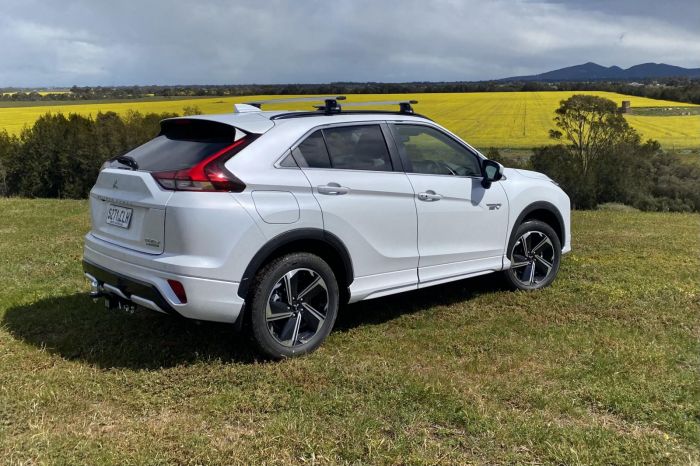
Still, it doesn’t hurt to be informative and it’s a very ‘Mitsubishi’ trait, going right back to the first Pajeros with their dash-top binnacle gauges. While the orange-lit ventilation system looks dated, the PHEV runs a trick electric heater to supplement the standard system, powered by the drive battery and therefore able to be activated by the Remote Control app externally.
The back seats offered sufficient legroom for my 194cm behind my own preferred driving position, but the headroom is impacted by the design.
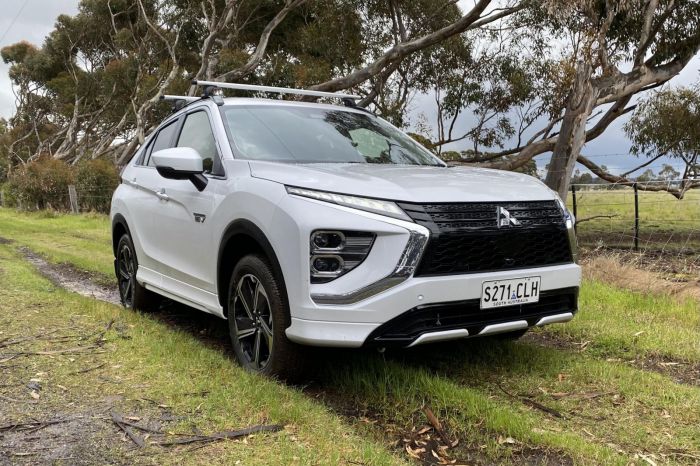
The slim side windows and chunky C-pillar make outward visibility inferior to the airier Outlander.
The boot, at 359 liters, is 46L smaller than petrol versions, and there’s not even a temporary spare wheel fitted as standard, let alone a proper one, on account of the battery. The back seats fold downwards to house longer items.
With five seats in use the boot measures 677mm long by 745mm high by 1000mm wide between the arches. With the backseats folded the length grows to 1541mm.
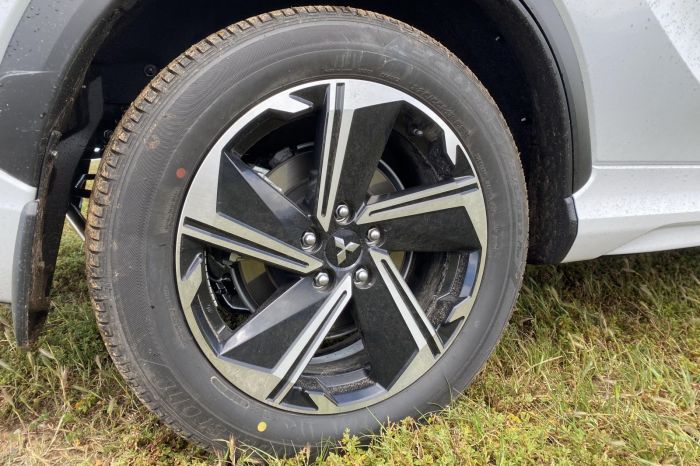
What’s under the bonnet?
It’s an Outlander PHEV in shinier wrapping.
The drive system comprises a 2.4-liter naturally aspirated four-cylinder Atkinson cycle petrol engine, a generator unit, a 13.8kWh lithium-ion battery, and electric drive motors on each axle allowing direct all-wheel drive (AWD).
The outputs of each are in the table below. Mitsubishi doesn’t offer any peak system outputs anymore, and it’s not always as simple as adding up the peak outputs of the engine and two motors.
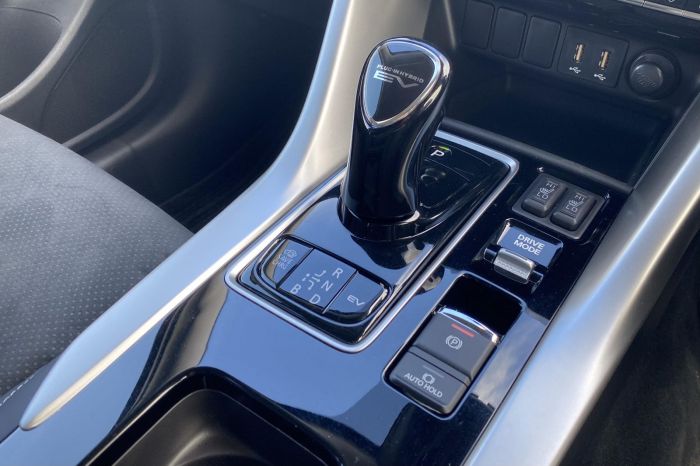
So long as the battery has sufficient charge and you’re just driving normally, the Eclipse Cross will default to electric ‘EV’ drive mode for a range of 40-45km. Mitsubishi claims 55km on the NEDC cycle but this would be difficult to achieve.
For many people, this would cover their daily errands. One benefit of the small battery is that it’s quick to recharge – 6.5 hours from a regular PowerPoint, 3.5 hours from a wall box, and 25 minutes on a public charger.
For longer trips, once the batteries are depleted, the PHEV system enters Series Hybrid mode – where the combustion engine operates at high efficiency by generating charge for the battery, which in turn spins the motors.
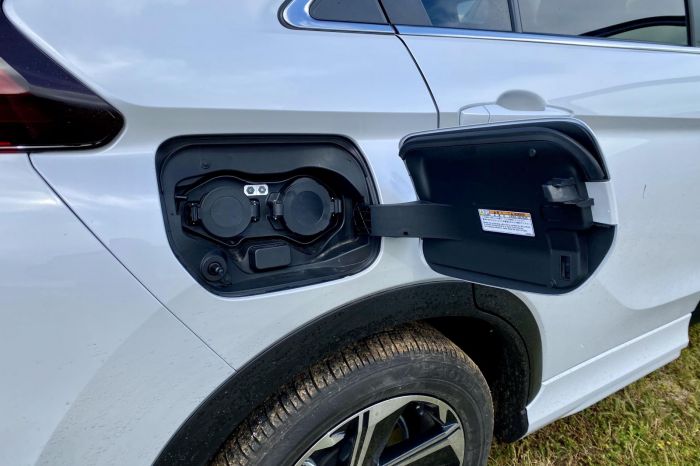
There’s also brake-energy recuperation which can be adjusted through the paddle shifters.
Finally, there’s a Parallel Hybrid mode for punchier driving at a low charge, or for hard overtaking at highway speeds any time, in which the combustion engine drives the front wheels directly through a clutch while generating battery charge for each motor. This is all systems go.
You can simply leave the car in its default mode and let its electronic brain operate the vehicle, but you can also toggle through all manner of targeted driving modes such as EV, Save and Charge that we’ll explain later.
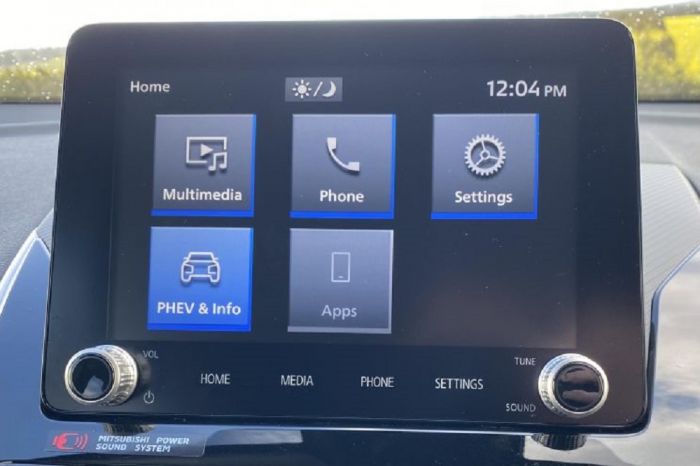
The upside of all this is an arbitrary combined-cycle fuel consumption figure of just 1.9 liters per 100km, however, this is only remotely achievable if you start with a charged battery and cover the first part of your trip with zero emissions.
My fuel consumption –reflective of average driving – when starting with 100 percent charge and covering 222km of mixed urban and highway roads, was 5.7L/100km including the first 40km of pure electric driving.
In other words, you get the upside of pure EV errands, but on longer commutes when you’re reliant on the petrol engine/generator, the fuel consumption is closer to that of a Toyota-style normal hybrid – with some added battery weight.
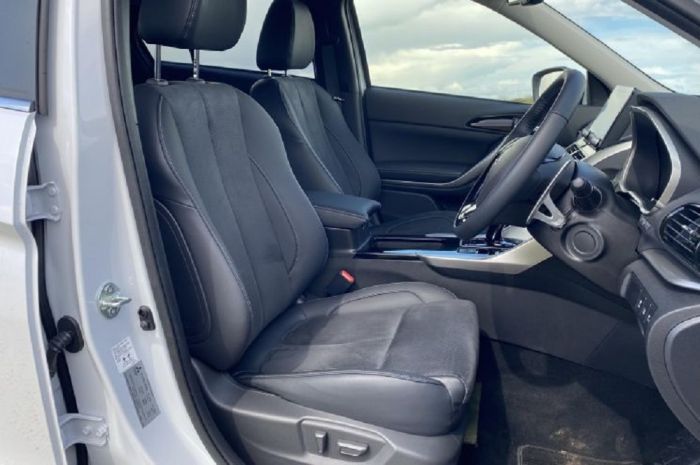
How does the Mitsubishi Eclipse Cross Plug-In Hybrid drive?
It should be clear from all this that you really are best served by charging after every drive – from your garage PowerPoint using household solar panels in the best-case scenario. If you’re not going to use the PHEV in this optimal way it loses traction.
For some people, though it’ll tick a lot of boxes, and there’s no doubt it’s clever stuff – if entirely familiar from the existing Outlander PHEV. There’s a bit to it, but it all operates very seamlessly.
Put your foot down with a charged battery, and you experience steady and silent propulsion like a relaxed non-performance EV. There’s a button that 100 locks in battery power, otherwise the car’s brain might tap into petrol at constant speeds where the engine is most efficient.
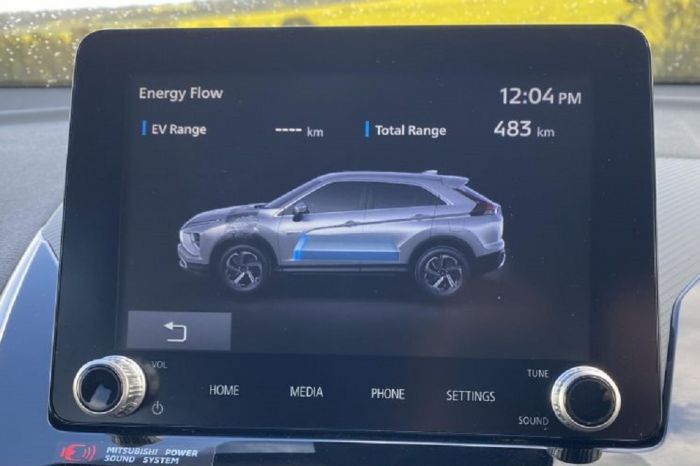
Once depleted the PHEV generally behaves as a series hybrid – a process you can watch following the active diagram on the touchscreen if you like. Initially, you get typical electric power joined by the sound of the engine quietly revving into the generator.
Mash your foot to punch up a hill or overtake though, and the clutch quickly hooks up the engine to the wheels alongside the motors and you overtake more quickly, without overt thrashing. While no speed demon, a 9.4-second 0-100km/h dash is acceptable.
It’s worth noting that Mitsubishi’s Super All-Wheel Control system is controlled by two electric motors, offering a degree of response to requests for traction that a mechanical system just won’t match. This AWD capability is a real selling point that Mitsubishi must hone in on.
So far, so simple. Just get in, flick the little shift-by-wire toggle to drive, and let the car’s brain juggle the disparate systems. However, some of us like to exert more control, and the Eclipse Cross, to its credit, allows for this.
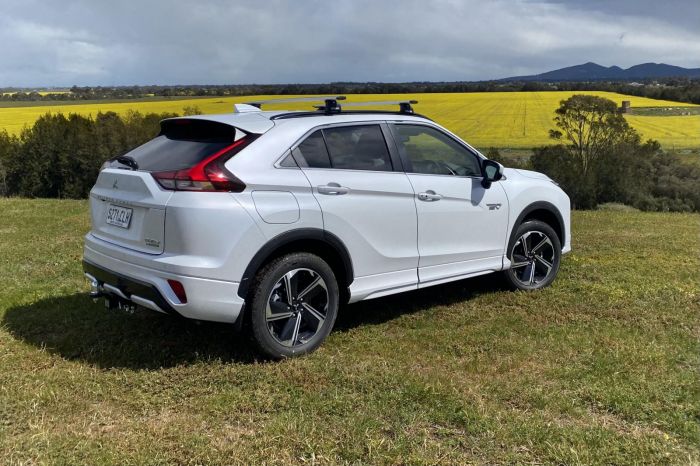
You can toggle through tarmac, snow, and gravel modes which adjust the motor torque delivery and the slip parameters of the ESP to suit expected traction levels. This is a competent soft-roader, happy on trails or in snow.
There are two extra sub-modes controlled by buttons. ‘Save’ will ensure the battery charge stays roughly fixed as you drive, thereby leaning on more petrol power. This is designed for Europe where some cities tax non-EVs.
The ‘Charge’ mode lets you use the engine to charge up the battery to 80 percent rather than just putting in enough power to turn the motors. This is possibly the least efficient and CO2-friendly way imaginable to zap up the battery so we’d rarely bother with it.
Finally, you can change the degree of brake energy recuperation through the Lancer Evo-style fixed paddle shifters on the column, which trickle-charges the batteries though never really makes a dent in recharging it – by design.
I think one of the fun things about running a PHEV is the degree to which you can mess with the different settings. On the flip side, it all becomes rather complicated and contingent on charging. If you’re lazy it isn’t for you.
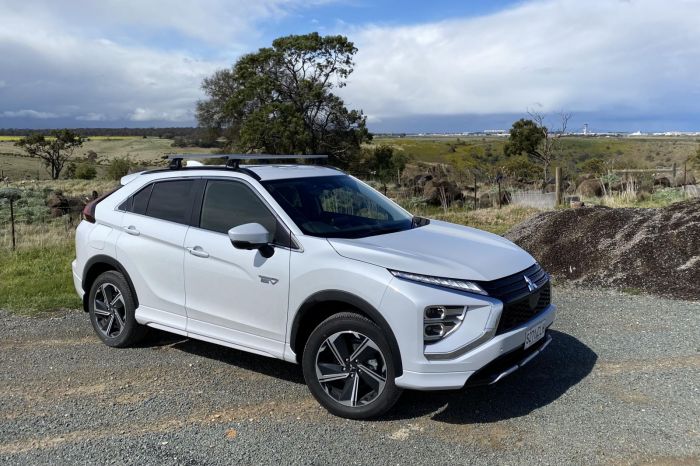
How about the dynamics? You sit up quite high but the design creates blind spots only partially offset by the cameras and radars. The steering is feather-light and the noise suppression is acceptable.
Because the added complexity adds about 300kg (Eclipse Cross PHEV’s curb weight minus the petrol Exceed AWD’s), it thumps a bit over sharp things like potholes and steep bumps, while the springs/dampers work hard on compression and rebound.
Despite the branding, it’s no corner-carver, with somebody lean and rather wooden brakes, but overall it’s quite a passive and benign vehicle that’s very easy to drive the majority of the time.
There’s one final benefit: bi-directional charging. It’s capable of putting power into a building by connecting a V2H-enabled device to its CHAdeMO DC port.
Since a plug-in hybrid can generate its own power when fuelled, it is also a short-term “generator on wheels” in instances when power fails such as natural disasters. Will you use this feature? Doubtful now, but perhaps V2H will become common.
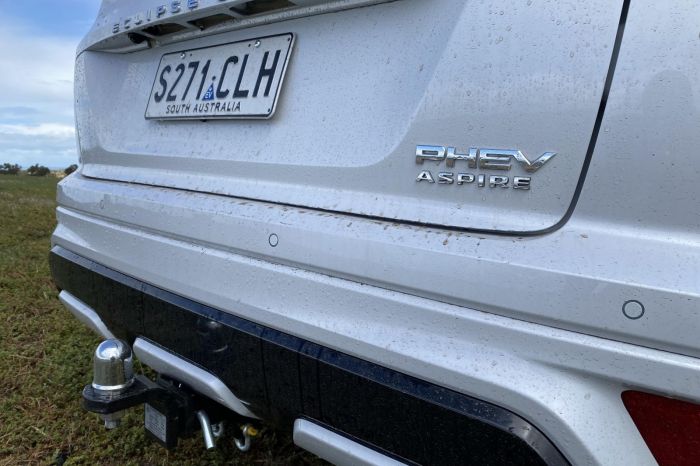
How much does the Mitsubishi Eclipse Cross Plug-In Hybrid cost to run?
If you service at a dealer the warranty lasts for 10 years and 200,000km. If you service at an independent, the warranty is five years or 100,000km.
Servicing intervals are 12 months or 15,000km. The first 10 visits have published pricing, with an average per-visit cost of $479 (each visit sits between $299 and $799 depending on how major the service is).
That’s an average per-visit cost of $100 higher than the non-PHEV 1.5-liter Eclipse Cross petrol. Another added cost to consider, if you live in Victoria, is the new mileage charge that affects EVs and PHEVs but not mild hybrids.
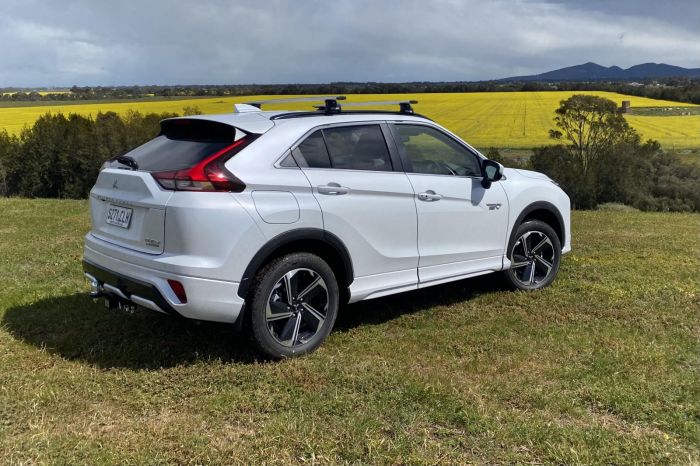
CarExpert’s Take on the Mitsubishi Eclipse Cross Plug-In Hybrid
Its price premium means any argument in favor of the PHEV cannot be solely economic. Thankfully the Eclipse Cross Plug-in Hybrid is a more competitive car than the 1.5-liter petrol model in numerous other ways.
Mitsubishi has certainly got the art of making a PHEV drivetrain well-honed after all these years, and it’s impressively refined. The Eclipse Cross is also a good size with a characterful design and clever dual-motor AWD.
If you fit the profile of someone who’d get the most out of the daily EV range, can charge nightly at home, and like the idea of combustion backup for longer trips where cheap short-range EV risks going flat, then it might work for you.
However, this is a car that necessitates a level of homework. Make sure you can make the technology work for you, by matching your behaviors to its strengths.





